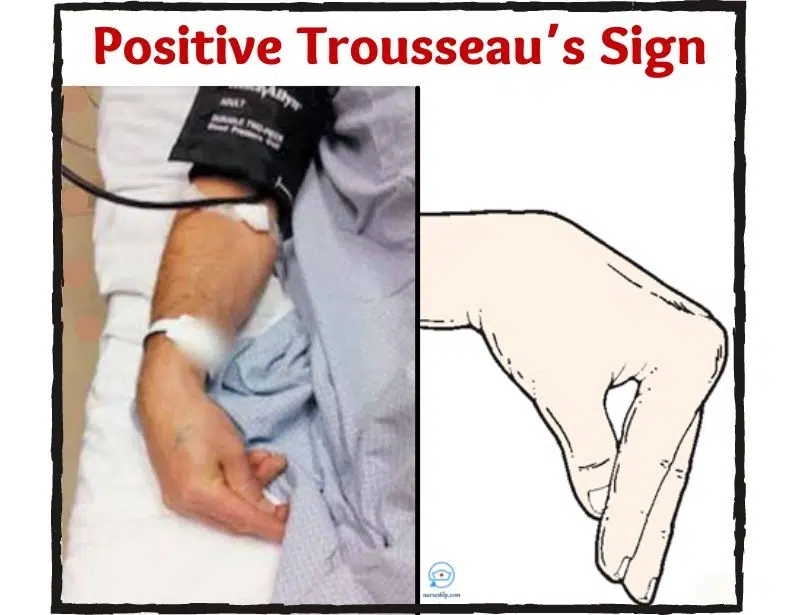Last updated on December 28th, 2023
Trousseau’s Sign
Trousseau’s sign is a clinical sign which indicates latent tetany due to low calcium levels – i.e. hypocalcemia. According to the studies the trousseau sign’s sensitivity and specificity for hypocalcemia are 94 and 99 percent. This means positive Trousseau’s sign is a strong indicator of hypocalcemia.
Trousseau’s sign was originally discovered by France physician Armand Trousseau (1801-1867). Hence, the sign is named after him.
Armand Trousseau described it as the occurrence of carpal spasms in patients with hypocalcemia when compression is applied to the upper arm with a BP cuff.
Another commonly assessed clinical sign for hypocalcemia is the Chvostek sign. But its sensitivity and specificity for hypocalcemia are not that well supported by the research evidence. However, when the patient elicits both the Chvostek sign and Trousseau sign are strong indications of the presence of hypocalcemia.
What are the causes of Trousseau’s sign?
The Trousseau sign is caused by hypocalcemia, which is a condition where the patient has a low serum calcium level. The normal serum calcium level is 8.5 to 10.5 mg/dL.
The causes for hypocalcemia include:
- Hypoparathyroidism
- Vitamin D deficiency.
- Kidney failure
- Acute pancreatitis,
- Certain drugs, such as zoledronic acid and cisplatin
- Sepsis
- Hemorrhagic shock
- Rhabdomyolysis
- Tumor lysis syndrome
To a lesser degree, Trousseau’s sign also occurs in patients with hypomagnesemia and metabolic alkalosis due to hyperventilation or extreme acid loss via the GI tract.
How to assess Trousseau’s sign
To assess Trousseau’s sign:
- Apply blood pressure cuff on the upper arm, as you would apply it to take manual BP.
- Inflate the sphygmomanometer cuff approximately 20 mmHg higher than the systolic BP.
- Keep the pressure for 3 minutes. Because, maximum excitability of the nerve trunk under the BP cuff is achieved at 3 minutes.
- If the patient develops carpal spasm marked by adduction of the thumb, flexion of the metacarpophalangeal joints, extension of the interphalangeal joints, and flexion of the wrist indicates a positive Trousseau’s sign. This phenomenon occurs due to ischemic changes.
Positive Trousseau sign
A positive Trousseau’s sign indicates hypocalcemia. Also, in few cases, a positive Trousseau’s sign exists along with hypomagnesemia and metabolic alkalosis.
Treatment of Trousseau’s sign
Correction of serum calcium level with calcium gluconate.
Conclusion
Trousseau’s sign is a clinical indicator of hypocalcemia. This can be observed by applying pressure with a manual BP cuff.
You may observe Trousseau’s sign during initial and/or routine vitals monitoring. The important thing is recognition and prompt reporting of the finding to the clinician. This allows early intervention and prevention of further complications.
Reference
White, F. (2009). Physical signs in medicine and surgery. Museum Press.




Comments are closed.